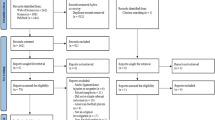Abstract
Objective
Recent studies showed that the neutrophil-to-lymphocyte ratio (NLR) and that platelet-to-lymphocyte ratio (PLR) can be used as inflammatory markers in Bell’s palsy. In this study, the aim is to investigate a novel inflammatory index, the Systemic Immune-Inflammation Index (SII), defined as SII = platelets × neutrophils/lymphocytes, in Bell’s palsy patients.
Study design
Retrospective.
Setting
Clinical research center.
Patients
The study included 88 Bell’s palsy patients and 50 healthy controls.
Interventions
Patients diagnosed with Bell’s palsy from 2010 to 2019 in a university hospital and an age- and sex-matched healthy control group were included in the study retrospectively. A complete blood count was performed for all participants. Magnetic resonance imaging was applied for Bell’s palsy patients for the exclusion of other diagnoses.
Main outcome measures
The CBC parameters were analyzed and hemoglobin, erythrocytes, leukocytes, neutrophils, lymphocytes, and platelet counts were measured. The PLR, NLR, and SII values were calculated with the formula.
Results
The patient group had higher neutrophil counts and higher SII and NLR values than the control group (p < 0.05). Also, SII value is a prognostic factor in Bell’s palsy in our study.
Conclusions
Bell’s palsy has an inflammatory component. The SII value can indicate an inflammatory condition in these patients. It may be used as a marker and prognostic indicator in Bell’s palsy.



Similar content being viewed by others
References
Gilden DH (2004) Clinical practice. Bell’s palsy. N Engl J Med 351:1323–1331
Stjernquist-Desanik A et al (2006) Detection of herpes simplex and varicella-zoster viruses in patients with Bell’s palsy by the polymerase chain reaction technique. Ann Otol Rhinol Laryngol 115:306–311
Bleicher et al (1996) A survey of facial paralysis: etiology and incidence. ENT- Ear, Nose &Throat Journal 75:355–358
Liston SL, Kleid MS (1989) Histopathology of bell’s palsy. Laryngoscope 99:23–26. https://doi.org/10.1288/00005537-198901000-00006
Yilmaz M et al (2002) Serum cytokine levels in Bell’s palsy. J Neurol Sci 197:69–72. https://doi.org/10.1016/S0022-510X(02)00049-7
Bucak A, Ulu Ş, Oruç S et al (2014) Neutrophil-to lymphocyte ratio as a novel-potential marker for predicting prognosis of Bell’s palsy. Laryngoscope 124:1678–1681
Lagalla G, Logullo F, Di Bella P, Provinciali L, Ceravolo MG (2002) Influence of early high-dose steroid treatment on Bell’s palsy evolution. Neurol Sci 23:107–112. https://doi.org/10.1007/s100720200035
Oya R, Takenaka Y, Imai T, Sato T, Oshima K, Ohta Y, Inohara H (2019) Neutrophil-to-lymphocyte ratio and platelet to lymphocyte ratio as prognostic hematologic markers of Bell’s palsy: a meta-analysis. Otol Neurotol 40:681–687
Ulu Ş, Ulu MS, Bucak A, Ahsen A, Yucedag F, Aycicek A (2013) Neutrophil to lymphocyte ratio as a new, quick and reliable indicator for diagnosis and prognosis of idiopathic sudden sensorineural hearing loss. Otol Neurotol 34:1400–1404
Yang R, Chang Q, Meng X, Gao N, Wang W (2018) Prognostic value of systemic immune-inflammation index in cancer: a meta-analysis. J Cancer 9(18):3295–3302
Zhong J-H, Huang D-H, Chen Z-Y (2017) Prognostic role of systemic immune-inflammation index in solid tumors: a systematic review and meta-analysis. Oncotarget. 8(43):75381–75388
House JW, Brackmann DE (1985) Facial nerve grading system. Otolaryngol Head Neck Surg 93:146–147
Zhang et al. (2019) The etiology of Bell’s palsy: a review. Journal of Neurology. March. doi:https://doi.org/10.1007/s00415-019-09282-4
Looker KJ, Magaret AS, May MT, Turner KME, Vickerman P, Gottlieb SL, Newman LM (2012) Global and regional estimates of prevalence and incident herpes simplex virus type 1 infections in 2012. PLoS One 10:e0140765. https://doi.org/10.1371/journal.pone.0140765
Author information
Authors and Affiliations
Corresponding author
Ethics declarations
Conflict of interest
The authors declare that they have no conflicts of interest.
Ethical approval
All procedures performed in studies involving human participants were in accordance with the ethical standards of the institutional (Afyonkarahisar Health Sciences University Ethical Committee) and with the 1964 Helsinki declaration and its later amendments or comparable ethical standards.
Informed consent
Informed consent was obtained from all individual participants included in the study.
Additional information
Publisher’s note
Springer Nature remains neutral with regard to jurisdictional claims in published maps and institutional affiliations.
Rights and permissions
About this article
Cite this article
Kınar, A., Ulu, Ş., Bucak, A. et al. Can Systemic Immune-Inflammation Index (SII) be a prognostic factor of Bell’s palsy patients?. Neurol Sci 42, 3197–3201 (2021). https://doi.org/10.1007/s10072-020-04921-5
Received:
Accepted:
Published:
Issue Date:
DOI: https://doi.org/10.1007/s10072-020-04921-5




